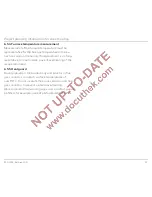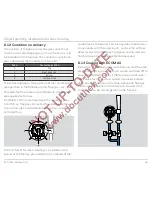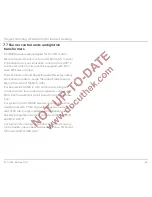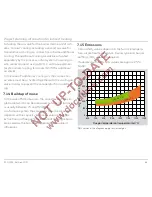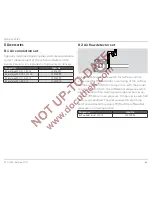
ECOMAX · Edition 10.17
47
Project planning information for direct heating
6 .16 Process boundary conditions
In direct heating systems, the flue gases are routed
out of the furnace chamber via the burner. Impurities
from the process can affect burner operation. Deposits
of dust or components from the material to be heated
which turn to gas (e.g. molybdenum) can accumulate
on the recuperator. This means that the volume of flue
gas routed via the recuperator falls and thus the burner
is less efficient. Furthermore, this can also lead to in-
creased furnace pressure and damage to the furnace
and burner. In this case, increased maintenance and
shorter cleaning intervals are required.
Other impurities, such as alkalis formed during the
heating of cast parts or from cooling and washing liq-
uids, can cause chemical attacks on the material. This
reduces the service life of the recuperator and the flue
gas guide tube. We therefore advise against use in forg-
ing and heating furnaces, in which raw materials are
heated. We also advise against use in aluminium smelt-
ing furnaces due to the dusty furnace atmosphere, the
danger of liquid metal spillings and possible chemical
attacks.
Avoid sub-stoichiometric burner operation. A reducing
atmosphere can lead to damage to the burner insula-
tion on the flue gas side, the metallic recuperator and
flue gas guide tube, and the vacuum-formed parts of
the flue gas guide tube for ECOMAX..C.
6 .17 Resistance of SiSiC
The ceramic recuperator of the ECOMAX..C consists of
reaction-bound silicon carbide (SiSiC), infiltrated with
metallic silicon. During the manufacturing process, a
protective layer made of SiO
2
is formed on the surface,
which ensures good chemical resistance.
When installing the burners, it must be ensured that
the protective layer on the ceramic surface is not dam-
aged.
The burners should be adjusted so that an excess air
value of 1 – 5% O
2
in the flue gas is maintained in order
to preserve the protective layer. In the case of sub-
stoichiometric burner operation (concentration of CO
> 1000 ppm), white deposits can build up on the SiSiC
over a long period of time. This reduces the service life
of the ceramic material.
Impurities such as fluorine, chlorine and alkali com-
pounds (e.g. with sodium or potassium) in the furnace
atmosphere also lead to chemical attack and shorten
the service life of the ceramic recuperator. We therefore
advise against use in forging and heating furnaces, in
which raw materials are heated. We also advise against
use in aluminium smelting furnaces.





